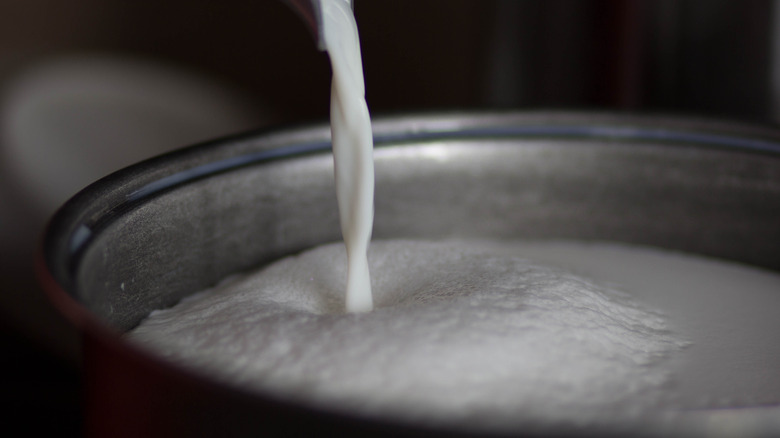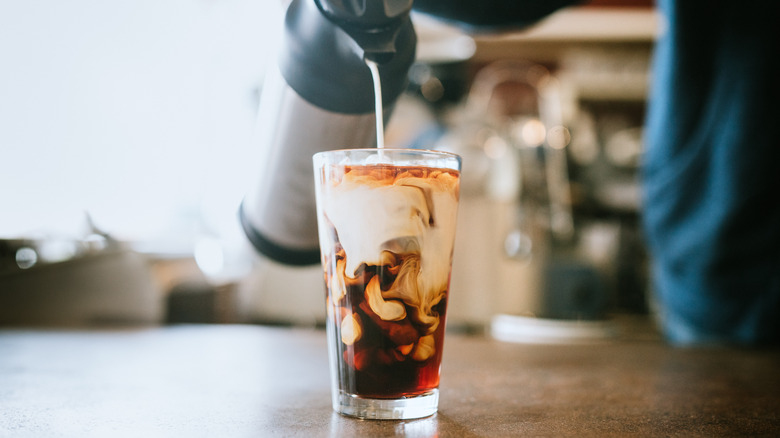Why Fresh Cream Was So Hard To Come By Back In The Day
Heavy cream is one of those products that you don't think about all that often until you really need it. (There are high-protein alternatives should you need them.) The smooth, fat-laden dairy product has a wide variety of uses, including cream-based pasta sauces, cream dishes like chicken tikka masala, and obviously to make whipped cream. Heavy cream is often just called "whipping cream." You can even use it as coffee creamer or to thicken hot chocolate if you're feeling extra decadent that day. It's also the last dairy step before you hit butter.
And we take it for granted that cream, like pretty much all grocery products — and especially dairy-based items — is available fresh whenever we want it. But, unsurprisingly, there was a time when that was far from the case. Before the 20th century, acquiring cream was a difficult and lengthy process. The story of how we got from there to here involves multiple technological innovations.
Technological advancements made easily-accessible cream possible
Heavy cream is the base for other dairy products: if you whisk it, you're going to wind up with whipped cream, while churning cream will eventually result in butter. But its origins make it clear why fresh heavy cream has always been a bit of a tricky product to acquire. The way to get it naturally is basically just to let milk sit out overnight. What winds up happening is semi-solid cream separates from liquid milk, and can then be skimmed right off the top. So before the modern age, time was a necessary ingredient in cream production — if you wanted cream, you'd best prepare well in advance.
But in 1894, a Swedish inventor named Gustaf de Laval created the milk-cream separator, a centrifugal engine that could turn milk into cream in minutes. Refrigeration already existed at the time of de Laval's creation, but it wasn't until the 1930s with Frigidaire's creation of synthesized freon that fridges became affordable for home commercial use. From there, it was simply a matter of transportation technologies advancing to where cream became widely and affordably available, no matter how far you were from a dairy farm.
The availability of certain cream products still varies by location today
The availability of cream is even somewhat dubious today, although for totally different reasons: cream often isn't even available in the same formats in different countries. The U.K., for instance, doesn't make use of half and half, which is around 10% milk fat. In general, people there either use milk in coffee or what they call "single cream," which checks in at around 18% milk fat. Their version of "heavy cream," meanwhile, is called either "whipping cream" or "double cream," which is basically the same as heavy cream at around 36–48% milk fat.
Regardless of what you call it, heavy cream is generally found pretty much everywhere. The U.K. is an outlier when it comes to half and half — most countries have it. In Canada, for instance, it's known as "manufacturing cream." And though the names might change, its use is clear from the nomenclature — it's "drinking cream" in Russia, while it's "coffee cream" in Sweden and Switzerland.


